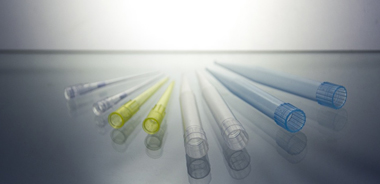研究人员在《动物科学与生物技术》期刊上发表题为“Effects of novel vaccines on weight loss in diet-induced-obese (DIO) mice”的论文,小鼠接受生长激素抑制素(somatostatin)疫苗的注射,六周后,明显下降的体重表明该疫苗的有效性。

实验小鼠被注射减肥疫苗后体重会下降
为了研究新疫苗的减肥效果,研究人员在试验前8周对C57BL/6J雄性小鼠喂养60%的脂肪食物,然后在试验期间的第1天和第22天为小鼠注射JH17 和JH18两种类型的生长激素抑制素疫苗,却仅向对照小鼠注射PBS。所有的小鼠子在随后的6周内继续获取60%的脂肪食物,然后对血液中抗体水平和胰岛素样生长因子1(IGF-1)进行检测。
据英国《每日邮报》7月8日报道,美国Braasch制药公司近日研发一种肥胖疫苗针剂,利用免疫系统对抗体重增加。实验中老鼠接受这种疫苗后4天便减少了自身体重的10%,而且这些实验中的老鼠被给予高热量的食物,这也许意味着,减肥疫苗能让人们食用高热量食物的同时还能保持身材。
美国Braasch制药是一家从事于疫苗临床前研发的公司,并致力于将生物医药的疫苗产品推向医疗保健市场。他们的跨平台利用(CPUV™)在疫苗接种领域是一个模式的转变。
这种肥胖疫苗的工作原理:免疫系统分泌生长激素抑制素(somatostatin)的抗体。生长激素抑制素是由大脑和消化系统生成的一种激素,这种激素能抑制其他的生长激素从而减慢新陈代谢,导致体重增加。重要的是,一些至关重要的激素并不会受肥胖疫苗影响。
据报道称,该研究仍旧处于早期,产品至少需要7-10年后才能上市,该疫苗仍旧需要大量研究来确认长期使用后的临床结果。据悉,目前英国市场上仅存在一种合法减肥药Xenical,这种药品能令人体减少吸收脂肪,但具有致人肠胃不适的副作用。
其它的减肥疫苗
葡萄牙波尔图大学的副教授玛丽安娜•蒙泰罗(Mariana Monteiro)发布了一项新型肥胖治疗疫苗,该疫苗通过抑制胃饥饿素(ghrelin)达到减少食物摄取,增加热量燃烧的减肥作用,并已在老鼠模型上验证收效。
胃饥饿素是胃里分泌的一种增强食欲,减少能量消耗的激素,它有助于促进体重增加。在病理性肥胖治疗中就有许多针对它的措施,比如胃旁路手术(gastric bypass)的原理也是抑制胃饥饿素。蒙泰罗评论说:“手术过程意味着,减轻体重的基础在于人体的激素机制。” 蒙泰罗研发的疫苗采用一种无侵染性病毒携带胃饥饿素,由此唤醒人体的免疫机制对抗胃饥饿素。
研究人员分别对正常体重及肥胖老鼠注射三次该疫苗。结果显示,与注射盐水的对照组相比,两种老鼠体内均生成了抗胃饥饿素抗体,促进了能量消耗。在首次疫苗注射的24小时内,肥胖老鼠的食量是对照组老鼠的82%;全部注射结束后,肥胖老鼠的食量降到了50%。注射疫苗的老鼠体内还表现出神经肽Y(NPY)蛋白表达的减少,蒙泰罗说:“神经肽Y是中枢神经系统中食欲增加的最有力标志,这个发现意味着抗饥饿素疫苗有效降低了大脑中的进食信号。”

 A pair-feeding study reveals that a Y5 antagonist causes weight loss in diet-induced obese mice by modulating food intake and energy expenditure.
A pair-feeding study reveals that a Y5 antagonist causes weight loss in diet-induced obese mice by modulating food intake and energy expenditure.
Keith N Haffer
The purpose of the study was to test the therapeutic effects of novel vaccines for reducing weight gain and increasing weight loss in diet induced obesity (DIO) model. Male C57BL/6J mice, fed a 60% Kcal fat diet for 8 weeks prior to the start of the study, were vaccinated via the intraperitoneal route with two formulations (JH17 & JH18) of chimeric-somatostatin vaccines at 1 and 22 days of the study. Control mice were injected with PBS. All mice continued to be feed the 60% Kcal fat diet for the 6 week study. Body weights were measured two times a week and food intake was measured weekly. At week 6, mice were euthanized and a terminal bleed was made and antibody levels to somatostatin and levels of insulin-like growth factor 1 (IGF-1) were determined. Vaccination with both vaccine formulations induced a statistically significant body weight change over the study period, as compared with PBS controls. Percentage of baseline body weight was also significantly affected by vaccination during the study period. Vaccinates finished the study at 104% and 107% of baseline weight, JH17 & JH18 respectively, while untreated controls reached 115% of baseline weight. Food intake per mouse was similar in all mouse groups during the entire study. Control mice did not demonstrate any antibody titers to somatostatin, while all vaccinated mice had measurable antibody responses (> 1:500,000 titer). IGF-1 levels were not statistically significant among the groups, but were elevated in the JH18 vaccinates (mean 440.4 ng/mL) when compared with PBS controls (mean 365.6 ng/mL). Vaccination with either JH17 or JH18 chimeric -somatostatin vaccines produced a statistically significant weight loss as compared with PBS controls (P < 0.0001), even though the DIO mice with continually fed a 60% Kcal fat diet. The weight loss/lower weight gain observations were even more significant, as all mice consumed similar amounts of food for the entire study. The presence of high levels of anti-somatostatin antibodies at 6 weeks was correlative with the weight observations and confirmed the success of vaccination.







